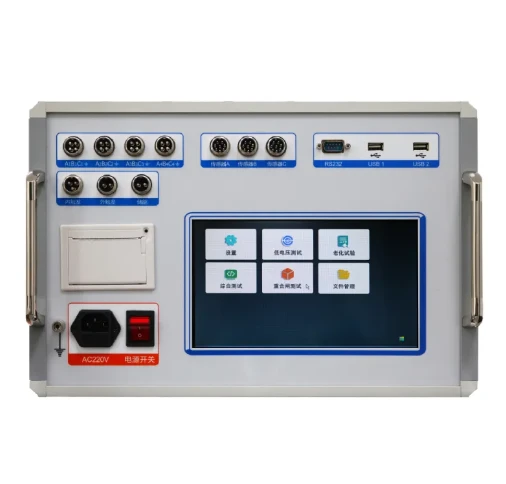TEL:
+86-0312-3189593
 English
English

Telephone:0312-3189593

Email:sales@oil-tester.com

-
 Afrikaans
Afrikaans -
 Albanian
Albanian -
 Amharic
Amharic -
 Arabic
Arabic -
 Armenian
Armenian -
 Azerbaijani
Azerbaijani -
 Basque
Basque -
 Belarusian
Belarusian -
 Bengali
Bengali -
 Bosnian
Bosnian -
 Bulgarian
Bulgarian -
 Catalan
Catalan -
 Cebuano
Cebuano -
 China
China -
 China (Taiwan)
China (Taiwan) -
 Corsican
Corsican -
 Croatian
Croatian -
 Czech
Czech -
 Danish
Danish -
 Dutch
Dutch -
 English
English -
 Esperanto
Esperanto -
 Estonian
Estonian -
 Finnish
Finnish -
 French
French -
 Frisian
Frisian -
 Galician
Galician -
 Georgian
Georgian -
 German
German -
 Greek
Greek -
 Gujarati
Gujarati -
 Haitian Creole
Haitian Creole -
 hausa
hausa -
 hawaiian
hawaiian -
 Hebrew
Hebrew -
 Hindi
Hindi -
 Miao
Miao -
 Hungarian
Hungarian -
 Icelandic
Icelandic -
 igbo
igbo -
 Indonesian
Indonesian -
 irish
irish -
 Italian
Italian -
 Japanese
Japanese -
 Javanese
Javanese -
 Kannada
Kannada -
 kazakh
kazakh -
 Khmer
Khmer -
 Rwandese
Rwandese -
 Korean
Korean -
 Kurdish
Kurdish -
 Kyrgyz
Kyrgyz -
 Lao
Lao -
 Latin
Latin -
 Latvian
Latvian -
 Lithuanian
Lithuanian -
 Luxembourgish
Luxembourgish -
 Macedonian
Macedonian -
 Malgashi
Malgashi -
 Malay
Malay -
 Malayalam
Malayalam -
 Maltese
Maltese -
 Maori
Maori -
 Marathi
Marathi -
 Mongolian
Mongolian -
 Myanmar
Myanmar -
 Nepali
Nepali -
 Norwegian
Norwegian -
 Norwegian
Norwegian -
 Occitan
Occitan -
 Pashto
Pashto -
 Persian
Persian -
 Polish
Polish -
 Portuguese
Portuguese -
 Punjabi
Punjabi -
 Romanian
Romanian -
 Russian
Russian -
 Samoan
Samoan -
 Scottish Gaelic
Scottish Gaelic -
 Serbian
Serbian -
 Sesotho
Sesotho -
 Shona
Shona -
 Sindhi
Sindhi -
 Sinhala
Sinhala -
 Slovak
Slovak -
 Slovenian
Slovenian -
 Somali
Somali -
 Spanish
Spanish -
 Sundanese
Sundanese -
 Swahili
Swahili -
 Swedish
Swedish -
 Tagalog
Tagalog -
 Tajik
Tajik -
 Tamil
Tamil -
 Tatar
Tatar -
 Telugu
Telugu -
 Thai
Thai -
 Turkish
Turkish -
 Turkmen
Turkmen -
 Ukrainian
Ukrainian -
 Urdu
Urdu -
 Uighur
Uighur -
 Uzbek
Uzbek -
 Vietnamese
Vietnamese -
 Welsh
Welsh -
 Bantu
Bantu -
 Yiddish
Yiddish -
 Yoruba
Yoruba -
 Zulu
Zulu
Feb . 14, 2025 17:56
Back to list
Transformer insulation oil breakdown voltage tester bdv
The transformer magnetising current test is a critical procedure in the electrical industry that offers invaluable insights into the health and functionality of transformers. Understanding how this test operates, its purpose, and the expertise needed to execute it effectively is crucial for any professional involved in electrical infrastructure maintenance and diagnostics.
Success in conducting the magnetising current test relies not only on technical knowledge but also on the trust and collaboration between teams. Electrical engineers must ensure careful calibration of testing equipment, adherence to safety standards to protect personnel, and thorough analysis of the data collected. This requires a professional equipped with both theoretical knowledge and practical, hands-on experience. Given the complexities involved in the test, organizations often seek out specialized services from firms renowned for their expertise in transformer testing. These firms bring a level of authoritativeness to the process, using state-of-the-art equipment and methodologies that have been honed through years of industry experience. By relying on such experts, utility companies can ensure an accurate assessment of their transformers, which is essential in maintaining the integrity and efficiency of the power grid. Moreover, transparency in the reporting and analysis of test results fortifies trustworthiness and facilitates informed decision-making. It is imperative for professionals to communicate findings in a manner that is accessible to stakeholders who may not have a technical background, yet are responsible for making crucial operational and financial decisions. In conclusion, the transformer magnetising current test is a fundamental procedure that embodies the intersection of science and experience. It requires discernment, precision, and a commitment to the highest standards of safety and efficiency. As the electrical industry continues to advance, the knowledge and application of this test remain integral to the sustainable operation of power systems around the world. Companies that prioritize expert-led magnetic current testing will benefit from increased reliability, extended asset life, and the economic advantages of minimized downtime.


Success in conducting the magnetising current test relies not only on technical knowledge but also on the trust and collaboration between teams. Electrical engineers must ensure careful calibration of testing equipment, adherence to safety standards to protect personnel, and thorough analysis of the data collected. This requires a professional equipped with both theoretical knowledge and practical, hands-on experience. Given the complexities involved in the test, organizations often seek out specialized services from firms renowned for their expertise in transformer testing. These firms bring a level of authoritativeness to the process, using state-of-the-art equipment and methodologies that have been honed through years of industry experience. By relying on such experts, utility companies can ensure an accurate assessment of their transformers, which is essential in maintaining the integrity and efficiency of the power grid. Moreover, transparency in the reporting and analysis of test results fortifies trustworthiness and facilitates informed decision-making. It is imperative for professionals to communicate findings in a manner that is accessible to stakeholders who may not have a technical background, yet are responsible for making crucial operational and financial decisions. In conclusion, the transformer magnetising current test is a fundamental procedure that embodies the intersection of science and experience. It requires discernment, precision, and a commitment to the highest standards of safety and efficiency. As the electrical industry continues to advance, the knowledge and application of this test remain integral to the sustainable operation of power systems around the world. Companies that prioritize expert-led magnetic current testing will benefit from increased reliability, extended asset life, and the economic advantages of minimized downtime.
Latest news
-
Testing Equipment Industry Sees Major Advancements in 2025: Smart & Precision Technologies Lead the WayNewsJun.06,2025
-
Applications of Direct Current Generators in Renewable Energy SystemsNewsJun.05,2025
-
Hipot Tester Calibration and Accuracy GuidelinesNewsJun.05,2025
-
Digital Circuit Breaker Analyzer Features and BenefitsNewsJun.05,2025
-
Benefits of Real-Time Power Quality Monitoring Devices for Industrial EfficiencyNewsJun.05,2025
-
Earth Fault Loop Testing in High-Rise Building Electrical SystemsNewsJun.05,2025



